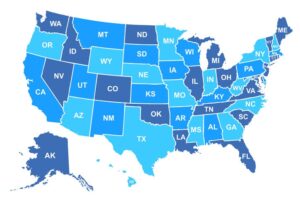Read Your ANOC! Part D Changes Could Cost You!

The Medicare annual enrollment period (AEP), which happens every year, provides beneficiaries a crucial opportunity to optimize their health coverage, especially for Part D prescription drug plans. Ignoring or overlooking this period can result in higher costs, discontinued plans, and unexpected changes in your drug coverage. This guide dives deep into why AEP is important and the critical steps you should take to ensure you’re well-prepared.
In this article we’ll discuss:
Why the Medicare Annual Enrollment Period (AEP) is Crucial
The One Trick That Can Save You Hundreds
The AEP, running from October 15th to December 7th, is the only time of the year when you can change your Part D prescription drug plans without special circumstances. The importance of this period cannot be overstated. The one mistake that could cost you dearly is not reviewing your Annual Notice of Change (ANOC).
What is the Annual Notice of Change (ANOC)?
The ANOC provides essential updates about your current drug plan, detailing changes for the upcoming year. These changes may include adjustments in monthly premiums, annual deductibles, co-pays, Coinsurance, pharmacy networks, covered medications, Prior authorization and Step therapy requirements, and even the availability of the plan itself. Neglecting to review these updates can lead to unpleasant surprises, such as increased costs or finding out that critical medications are no longer covered.
Key Steps to Navigate AEP Successfully
1. Look for Your ANOC in September or Early October
Your current drug plan company will typically send the ANOC around September, but you should definitely have it by early October. If it hasn’t arrived, contacting your plan immediately is imperative.
2. Read Through Your ANOC Carefully
Although the ANOC typically spans over ten pages filled with detailed updates, dedicating some time to thoroughly review this document is well worth it. Here’s what you should focus on:
Monthly Premiums: Check for any increases.
Annual Deductibles: Note changes in your Deductible amounts.
Co-Pays and Coinsurance: Look for variations in cost-sharing.
Pharmacy Networks: Ensure your preferred pharmacy remains in-network.
Covered Medications: Verify all your essential drugs are still covered.
Plan Availability: Confirm your plan will still be available.
3. Use Medicare.gov’s Plan Finder Tool
Starting October 1st, you can begin reviewing your Part D plan options using Medicare.gov’s Plan Finder tool. If you have an account, your prescription medications should already be listed, making the process even smoother. Double-check for accuracy and explore available plans to see if a better option exists for your needs.
4. Make Your Decision by December 7th
If, after reviewing your options, you find a plan that better suits your needs, enroll in it by December 7th. Failing to act within this window means you’ll have to wait another year before you can make any changes.
Common Pitfalls to Avoid
Assuming Your Current Plan Will Remain the Same
Even if you’re satisfied with your current plan or you don’t take many medications, assuming everything will remain the same can be a costly mistake. Plans change, and those changes can significantly impact your out-of-pocket costs.
Ignoring Increased Premiums and Other Costs
The Inflation Reduction Act and the $2,000 out-of-pocket cap on prescription medications have raised concerns that plans might compensate by increasing premiums. Therefore, pay close attention to any cost changes reported in your ANOC.
Overlooking Changes in Coverage
Imagine showing up at the pharmacy in March to find out your medication costs have skyrocketed because your Part D plan was discontinued or your drug is no longer covered. This scenario is not just hypothetical; it has happened. Careful review of your ANOC can prevent such surprises.
Special Considerations for Medigap Plans
Differences Between Medigap and MA/Part D Plans
While AEP is essential for Part D and Medicare Advantage Plans, it’s not the period to change your Medigap plans. Medigap plans (Plan N, Plan G, Plan F, etc.) are typically not subject to annual changes. Instead, any adjustments in coverage or costs for Medigap plans usually happen automatically to reflect Medicare-approved amounts.
Changing Medigap Plans
Changing your Medigap plan outside AEP generally requires medical Underwriting unless your state offers specific open enrollment opportunities throughout the year. If you’re considering switching Medigap plans, it’s advisable to contact your insurance provider for detailed information based on your state’s regulations.
Recap: Key Actions
To ensure you’re making the most out of the Medicare AEP, keep these four key actions in mind:
Look for Your ANOC: Expect it in September or early October, and contact your plan if you don’t receive it.
Read Through Your ANOC: Review for updates on costs, networks, and medications.
Review Your Options: Use Medicare.gov’s Plan Finder tool or consult your insurance agent.
Enroll by December 7th: Select a new plan, if needed, within the enrollment window.
AEP is an annual opportunity to make sure your Part D prescription drug plan meets your needs and aligns with your healthcare costs. Staying attentive and informed can save you from costly surprises and ensure you have the best possible coverage for the upcoming year.


